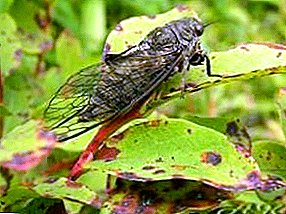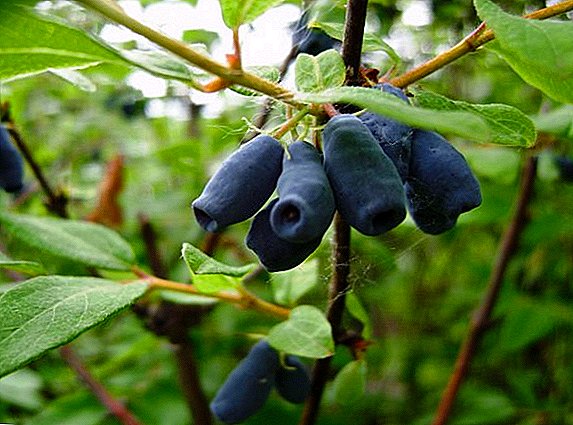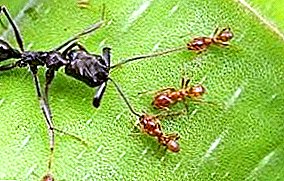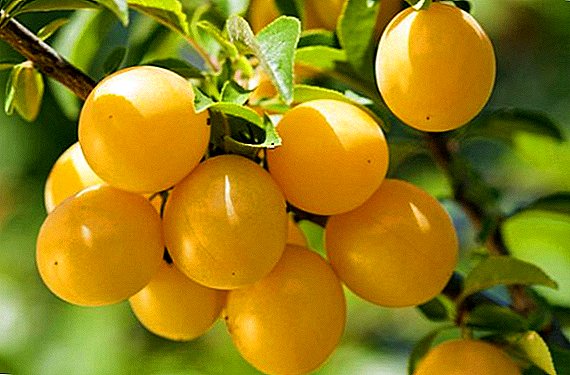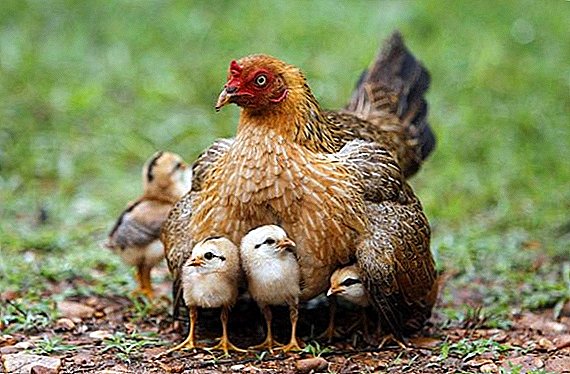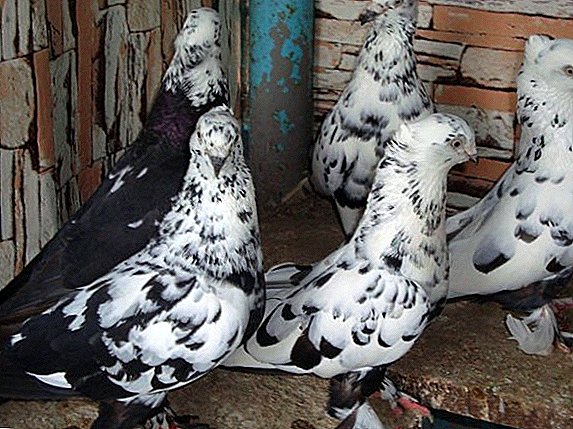 If in the old days pigeons were highly valued for their ability to deliver letters over long distances, today they are bred for aesthetic pleasure, for enjoying the beauty of their flight. A unique breed of pigeons, Andijan, is especially popular among the lovers of this business. Next, you will learn what these birds are remarkable for, and how to grow them at home.
If in the old days pigeons were highly valued for their ability to deliver letters over long distances, today they are bred for aesthetic pleasure, for enjoying the beauty of their flight. A unique breed of pigeons, Andijan, is especially popular among the lovers of this business. Next, you will learn what these birds are remarkable for, and how to grow them at home.
The origin of pigeons
Andijan pigeons belong to one of the most ancient species of Uzbek birds, which are widely spread in the Andijan region.
Did you know? According to the well-known golodoveda V.N. Kadushkin, Andijan pigeons were brought to Andijan in 1890 from Iran. Several Iranian families, having moved to Uzbekistan, brought with them several pairs of pigeons, among which were birds, now called Andijan.
The perennial efforts of breeders contributed to the fact that the breed significantly improved its exterior qualities and flight characteristics, and quickly became in demand not only in Uzbekistan, but also in the cities of Kyrgyzstan, and then in many states of the post-Soviet space. 
External breed description
"Andijan" is one of the most beautiful breeds of pigeons, which conquered many blue-sisters with their exterior qualities and excellent flight characteristics.
Consider the most popular species and breeds of pigeons, and in particular the Volga band, tippler, duty, peacock pigeons and Uzbek fighting pigeons.
Color
Andijan pigeons are easy to distinguish from other breeds. They have a bright appearance and characteristic color. Today there are representatives with more than 60 kinds of different colors, among which the most common are:
- pure white;
- white with red sternum - Kyzyl-Toshi;
- gray-lilac with a tint of red-brown color - gur;
- black, with small white patches on the head, shoulders and neck - bark-op;
- white, with brown impregnations at the neck, on the head or shoulders - malla-bosh.

Torso
Representatives of this breed are quite massive and have a large physique:
- weight - about 370 g;
- body length - up to 40 cm;
- girth - up to 26-28 cm;
- body - long, slightly raised;
- chest - powerful, wide;
- head - medium size, oval shape, looks like a bullet unfolded;
- forelock - long and narrow, located on the back of the head, may be slightly sloping to the right, left or back;
- eyes - large;
- legs - upright, about 10-12 cm long, with small plumage in the lower part, sharp claws and spurs;
- tail - long, 15-18 cm, with 12-14 tail feathers.
Familiarize yourself with all the features of keeping domestic pigeons, and in particular in winter.
The most stringent breed standards relate to feathered eyes. The color of the iris is milky beige according to the standard, but also grayish-metallic. The eyelids of the blue-blooded birds should not be dark and clear; white, blue or slightly lilac shades. 
Beak and wings
The wings of Andijan are strong and strong, 26-30 cm long, in a span of up to 70 cm. They fit snugly to the body, and their ends are neatly arranged on the tail. Each feather tightly to each other.
A true purebred Andijan is distinguished by a neat beak of medium size, up to 18 mm in length. The color can be different: white, blue or beige. The colors of the beak should be combined with the color of the eyelids and the head.
For sure, it will be useful for you to learn how to get rid of pigeons on the balcony, how many days pigeons sit on eggs, and also get acquainted with the top 10 most unusual pigeons of the world.
Breed character
The pigeons from Andijan are appreciated not only for their high aesthetic qualities, but also for their persistent, peace-loving character, and, of course, for their excellent flight characteristics. Birds are extremely hardy, strong, able to stay in the air for 4 to 8 hours. Some specimens may spend over 10 hours in free flight.  The Andijan pigeons belong to the slaughter breed, which have a unique style of flight. They rise into the sky, making multiple rolls and coups, while flapping their wings very loudly. They also carry out an "exit to the pole", during which they can remain motionless for several minutes. Upward the birds rise in circles, holding flocks.
The Andijan pigeons belong to the slaughter breed, which have a unique style of flight. They rise into the sky, making multiple rolls and coups, while flapping their wings very loudly. They also carry out an "exit to the pole", during which they can remain motionless for several minutes. Upward the birds rise in circles, holding flocks.
A special quality of Andijan birds is their attachment to the house. Even a very tired bird will always find the way home and return to its owner. Birds are endowed with excellent parental instinct, perfectly incubate and feed their offspring.
Important! It is extremely necessary to correctly pick a roost, otherwise the improper, unnatural position of the bird’s torso can contribute to the development of its deformation, which will negatively affect the quality of the flight and the life span of the feathered one.
Content Features
Andijan pigeons are considered to be one of the most popular breeds of breeders, because, along with excellent qualities and characteristics, they are unpretentious in care, do not require special conditions for the maintenance and a special diet. 
In room
These birds live well in cages, but do not accept cellular content.
- The main criteria for arranging the space for pigeons is freedom. That is, the bird house should be as spacious as possible, having at least 1.5 cubic meters. m of air area and 0.5 square meters. m floor per bird.
- The size of the pole should be chosen such that it corresponds to the circumference of the fingers.
- It is equally important to monitor the cleanliness and dryness of the bedding material, for which peat, hay, sawdust, old rags, etc. are excellent.
- It is recommended to cover the pigeon floor with a shallow layer of sand.
- Cleaning should be carried out regularly - thoroughly clean the litter, monitor hygiene.
- Care must be taken to ensure that rodents or insects that can become sources of various diseases, in particular, paratyphoid, do not have access to the room.
- It is imperative to install wooden boxes or bases with small walls in the dovecote, where birds will incubate their offspring.

When growing pigeons from Andijan, it is necessary to devote time to their daily training. Begin classes should be when the bird crossed the age limit of 60 days. The main essence of the exercise is that pigeons are released on the street and for a certain time do not allow them to fall on the roof. The duration of training sessions is 30-40 minutes.
Certain conditions are necessary for breeding and growing pigeons. Read more tips and tricks for building a dovecote, and learn how to make a pigeon feeder.
What to feed
As for the food of the Andijan pigeons, everything is simple here. Birds have naturally good health, strong immunity, and with a proper balanced diet can live for 15-20 years.
The main diet of birds is:
- cereals: millet, barley, corn grits, rice, wheat;
- vegetables: boiled potatoes, shredded carrots;
- seeds: hemp, sunflower;
- greenery: fresh grass - in the summer, dried - in the winter;
- additives: coquina, chalk, eggshell, fish oil, yeast.
 The daily portion of pigeon food is 40 g. It is recommended to organize two meals:
The daily portion of pigeon food is 40 g. It is recommended to organize two meals:- 10 g give in the morning;
- 30 g - in the evening.
Pigeons must always have access to fresh, clean water at room temperature. If dry mixes prevail in the diet, then water should be given three times more in volume.
Poultry farmers will be helpful to read all about feeding domestic pigeons.
Golubovedov favorites Andijan pigeons are “birds of high flight”, which fascinate with their extraordinary, attractive appearance, lively disposition and excellent flight capabilities. They are undemanding to the conditions of detention, easy to care for, have excellent character and show dedication and loyalty to the owner throughout their lives.




